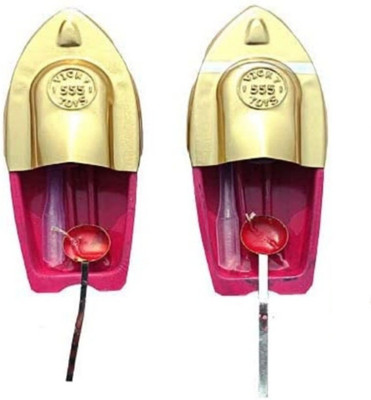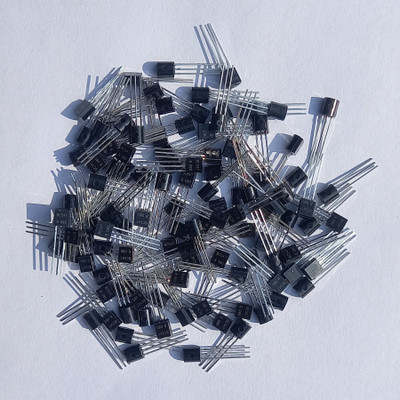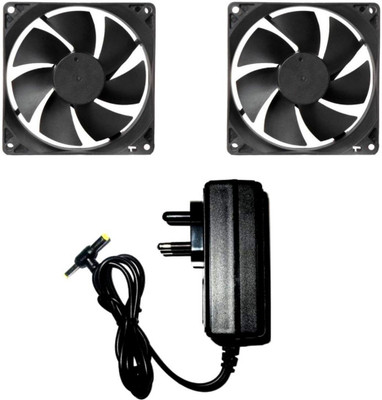
DPELECTRONICS HEART BEAT MONITERING SYSTEM Educational Electronic Hobby Kit
Price: Not Available
Currently Unavailable
Warranty
NA
Highlights
- Power Source: AC
- Material: Plastic
- Weight: 0.5
Description
COMPONENTS:- TRANSFORMER (WHICH CONVERTS 220V AC TO 12V AC) VOLTAGE REGULATER ARDUINO UNO MICRO CONTROLLER 16X2 LCD DISPLAY PULSE SENSOR. Heartbeat Sensor is an electronic device that is used to measure the heart rate i.e. speed of the heartbeat. Monitoring body temperature, heart rate and blood pressure are the basic things that we do in order to keep us healthy. In order to measure the body temperature, we use thermometers and a sphygmomanometer to monitor the Arterial Pressure or Blood Pressure. Heart Rate can be monitored in two ways: one way is to manually check the pulse either at wrists or neck and the other way is to use a Heartbeat Sensor. In this project, we have designed a Heart Rate Monitor System using Arduino and Heartbeat Sensor. You can find the Principle of Heartbeat Sensor, working of the Heartbeat Sensor and Arduino based Heart Rate Monitoring System using a practical heartbeat Sensor. Introduction to Heartbeat Sensor Monitoring heart rate is very important for athletes, patients as it determines the condition of the heart (just heart rate). There are many ways to measure heart rate and the most precise one is using an Electrocardiography But the more easy way to monitor the heart rate is to use a Heartbeat Sensor. It comes in different shapes and sizes and allows an instant way to measure the heartbeat. Heartbeat Sensors are available in Wrist Watches (Smart Watches), Smart Phones, chest straps, etc. The heartbeat is measured in beats per minute or bpm, which indicates the number of times the heart is contracting or expanding in a minute. Principle of Heartbeat Sensor The principle behind the working of the Heartbeat Sensor is Photoplethysmograph. According to this principle, the changes in the volume of blood in an organ is measured by the changes in the intensity of the light passing through that organ. Usually, the source of light in a heartbeat sensor would be an IR LED and the detector would be any Photo Detector like a Photo Diode, an LDR (Light Dependent Resistor) or a Photo Transistor. With these two i.e. a light source and a detector, we can arrange them in two ways: A Transmissive Sensor and a Reflective Sensor. In a Transmissive Sensor, the light source and the detector are place facing each other and the finger of the person must be placed in between the transmitter and receiver. Reflective Sensor, on the other hand, has the light source and the detector adjacent to each other and the finger of the person must be placed in front of the sensor. Working of Heartbeat Sensor A simple Heartbeat Sensor consists of a sensor and a control circuit. The sensor part of the Heartbeat Sensor consists of an IR LED and a Photo Diode placed in a clip. The Control Circuit consists of an Op-Amp IC and few other components that help in connecting the signal to a Microcontroller. The above circuit shows the finger type heartbeat sensor, which works by detecting the pulses. Every heartbeat will alter the amount of blood in the finger and the light from the IR LED passing through the finger and thus detected by the Photo Diode will also vary. The output of the photo diode is given to the non – inverting input of the first op – amp through a capacitor, which blocks the DC Components of the signal. The first op – amp cats as a non – inverting amplifier with an amplification factor of 1001. The output of the first op – amp is given as one of the inputs to the second op – amp, which acts as a comparator. The output of the second op – amp triggers a transistor, from which, the signal is given to a Microcontroller like Arduino. The Op – amp used in this circuit is LM358. It has two op – amps on the same chip. Also, the transistor used is a BC547. An LED, which is connected to transistor, will blink when the pulse is detected.
Read More
Specifications
In The Box
|
General
| Brand |
|
| Model Number |
|
| Skillset |
|
| Type |
|
| Minimum Age |
|
| ROHS Complaint |
|
| Material |
|
| Age Group |
|
| Suitable For Gifting |
|
| Key Features |
|
Dimensions
| Width |
|
| Height |
|
| Other Dimensions |
|
| Weight |
|
Power Features
| Battery Type |
|
| No Of Batteries |
|
| Battery Size |
|
| Power Source |
|
| Power Consumption |
|
| Other Power Features |
|
Warranty
| Domestic Warranty |
|
| International Warranty |
|
| Warranty Summary |
|
| Service Type |
|
| Covered in Warranty |
|
| Not Covered in Warranty |
|
Additional Features
|
Be the first to ask about this product
Safe and Secure Payments.Easy returns.100% Authentic products.
Back to top




